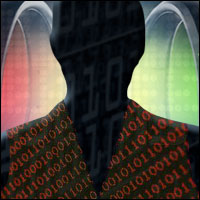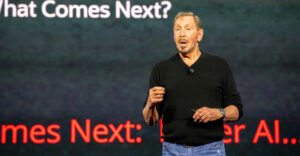
I’ve been following the wearables space with great interest over the last year, from the first steps of products like Fitbit and Jawbone to the current wave of activity by a growing list of device makers and, importantly, app tool vendors.
This has a great deal to do with CRM, both because of the customer-tracking angles — and there are many — and the fact that vendors like Salesforce.com are rushing headlong into supplying developer tools.
Salesforce on Thursday announced support for an additional five devices, nearly doubling the stable of six it started with at the beginning of the summer. While the devices, their apps and vendors are very interesting — as are the use cases for wearables — the progress so far tells me the market hasn’t yet hit its stride.
That’s not to say we aren’t seeing some cool applications. For example, I never realized there were so many vendors getting into the glasses space, and there are various vendors of wristwatch-like things, along with things that go into pockets or possibly around the neck.
Howdy-Do, Mr. P?
The glass makers and their app brethren seem intent on delivering detailed documentation, especially diagrams and drawings, to people who might be working on or fixing devices in places where you can’t just pull out the manual or even a laptop.
A reference case is an app that enables repair technicians to access diagrams for things like oil refinery infrastructure. I also can envision a surgeon accessing the most recent Xray or MRI during surgery to better understand some pathology.
There’s a fair number of recognition apps that enable an institution to recognize a customer or employee. Employees wearing a device might automatically emit a signal that would enable them to bypass the card swipe station — rather like RFID or highway toll machines. A store — or inevitably a casino — might recognize a customer walking in and, well, you know.
Personally, I’m cheap, and I don’t shop in stores that employ people who might recognize me for the purpose of selling me something. Also, I am an introvert, and all that “how are you today, Mr. Pombriant?” would freak me out. I like my anonymity, and I hope whatever apps they develop to track me also have a database field that recognizes my need for privacy. Also, I stay away from places specifically designed to sell me my own adrenaline for a high price.
This brings me to the question of questions. What are wearables for? Or more specifically, why would I buy one or several and wear them? This quickly gets me to the point that we are so early in the wearables growth phase that we haven’t yet found the killer apps — maybe a few but certainly not all of them.
Intimate Data
Wearables present all of the ownership complexities that we saw with handhelds prior to Bring Your Own Device becoming the “standard.” Back then, businesses figured they’d be buying the devices and that they therefore could tell employees what to use and how to use it. BlackBerry became the enterprise choice but couldn’t hold serve when the iPhone arrived. People decided en masse to use their iPhones at work, and not long after that their Android devices, and all IT could do was try to catch up.
If anything, the situation with wearables is more complicated. Wearables are assumed to be personal devices and therefore personal purchases. They capture intimate data — for instance, how many hours you sleep you get or calories you consume — and this data ought to be off limits to businesses and bosses, but I don’t see anyone thinking about the implications yet. It raises the question, “how much of me do I share with the world?”
Wearables, for the most part, seem suited to very specific and repeatable functions, like entering a building. Compared with a glass app that can provide continuous benefit as part of a technician’s tool kit, other devices seem one-dimensional. So, one of my quick conclusions is that wearable devices will need to support a bunch of apps and business processes, or they’ll fail.
I can’t see wearing a fitness device, carrying a phone, putting digital glasses on my nose, and carrying an identity device. It makes rolling out of bed and dressing a marathon.
In all the demos I’ve seen, I haven’t seen a good example of data moving from the wearable to something more robust. I am thinking of the way a Fitbit captures data and then displays graphs and charts on my phone. Certainly not all wearables will need to conform to that model, but I think it would increase the likelihood of using wearables if there were some greater payoff.
In the Moment
Many single-use devices will quickly prove impractical, but I suspect we’re all on track to settle on one personal and wearable device that offers multiple functions. This is not a bad thing. As a pendant, a device could become a fashion statement; on the wrist, perhaps more a declaration of status.
On the nose, who knows? There are people who will use glasses at work and be thought cool, and there are others who will wear them socially and find themselves, shall we say, friend-challenged.
What I see in all this is wearables makers rushing to solve old problems that were solved, perhaps less elegantly, by larger devices. That’s the way things go in rolling out a new paradigm — we’ve seen it before. It’s cool when you can put your finger on the moment, though, like we can right now with wearables.





















































